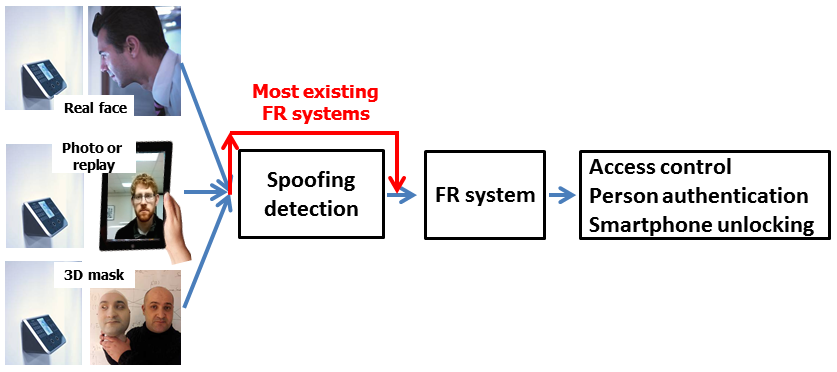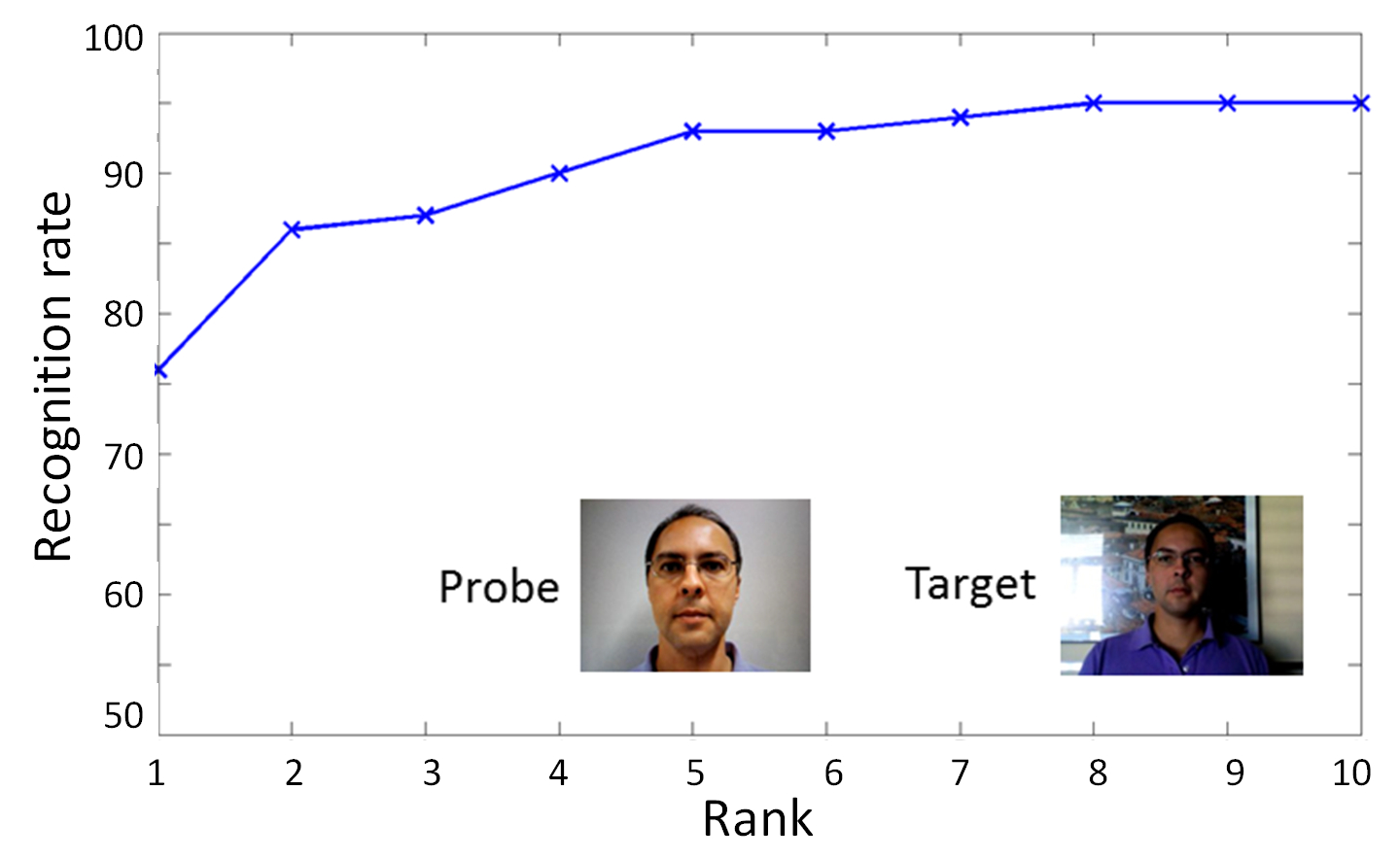| Department of Computer Science and Engineering |

|
Current Projects Face Liveness
The popularity of face recognition has raised concerns about face spoof attacks (also known as biometric sensor presentation attacks), where a photo or video of an authorized person's face could be used to gain access to facilities or services. While a number of face spoof detection techniques have been proposed, their generalization ability has not been adequately addressed. In this project, we propose a new method for face liveness detection based on image quality analysis from 2D face spoof attacks (printed photos, video replays, etc.). Compared with widely used approaches based on face texture and motion analysis, the image quality analysis does not require face detection. Additionally, spoof detection based on image quality analysis should have better generalization ability than methods based on face texture or motion analysis. We also collect a face spoof database, MSU Mobile Face Spoofing Database (MSU MFSD), using two mobile devices (Google Nexus 5 and MacBook Air) with three types of spoof attacks (printed photo, replayed video with iPhone 5S, and iPad Air). The cross-database performance of individual face liveness detection methods is an important topic in this project.
In [1] we used image distortion analysis (IDA) to classify whether an input to a facial recognition system is of a genuine user or a spoof user. Four different features (specular reflection, blurriness, chromatic moment, and color diversity) are extracted to form the IDA feature vector. Experiments show our classifier based on IDA generalizes well, achieving state of the state performance, especially in cross-database testing, which portrays real world scenarios.
In [2] we address the problem of face spoof detection of replay attacks based on the analysis of aliasing in spoof videos. We analyze the moiré pattern aliasing that commonly appears during the recapture of video or photo replays on a screen in different channels (red, green, blue and grayscale) and regions (the whole face, detected face, facial component between the nose and chin). Multi-scale LBP and DSIFT features are used to represent the characteristics of moiré patterns. Experimental results on Idiap replay-attack and CASIA databases, as well as on a database we collected, Replay Attacks for Smartphones (RAFS), shows that the proposed approach is very effective in face spoof detection for both cross-database and intra-database testing scenarios. An Android application based on [2] has been developed and shows potential to be used for real world application.
Relevant Publication(s) [1] D. Wen, H. Han, and A. K. Jain, "Face Spoof Detection with Image Distortion Analysis", IEEE Transactions on Information Forensics and Security, Vol. 10, No. 4, pp.746-761, April 2015. [pdf] [database]. [2] K. Patel, H. Han, and A. K. Jain, "Live Face Video vs. Spoof Face Video: Use of Moire Patterns to Detect Replay Video Attacks", ICB, Phuket, Thailand, May 19-22, 2015. [pdf]
|



